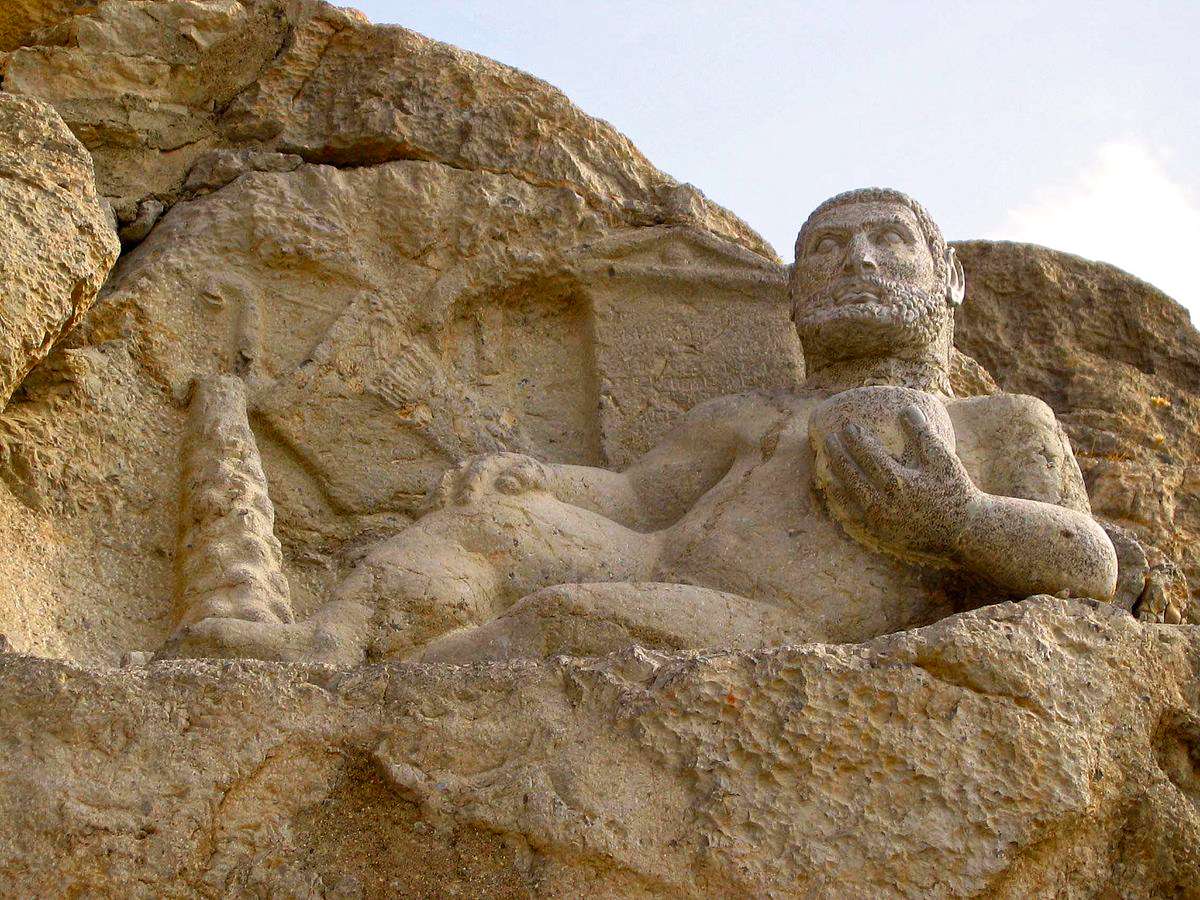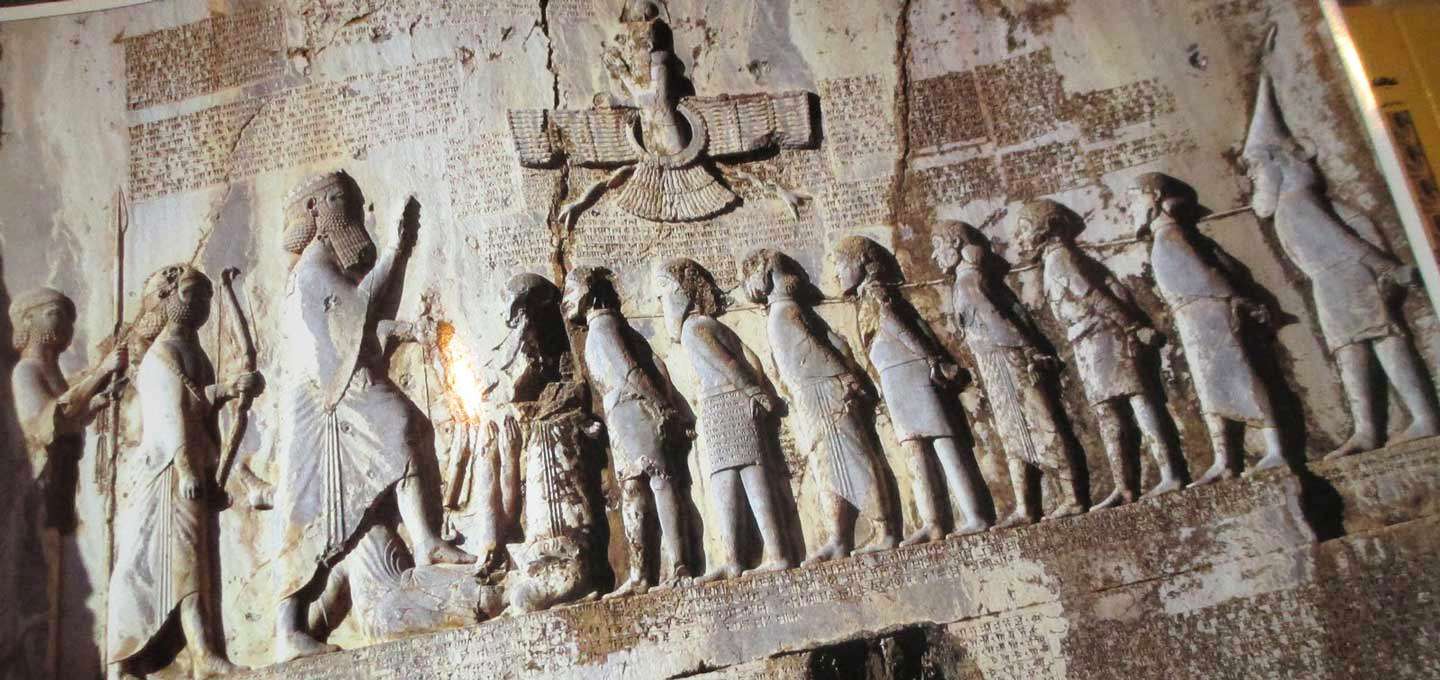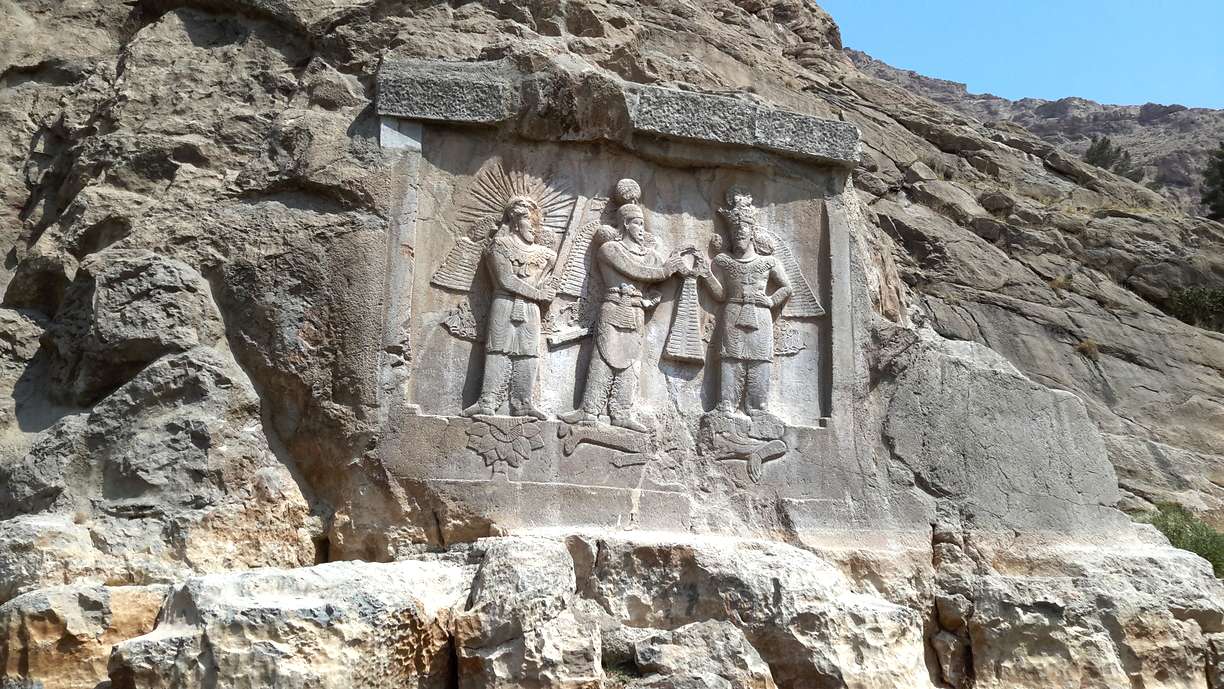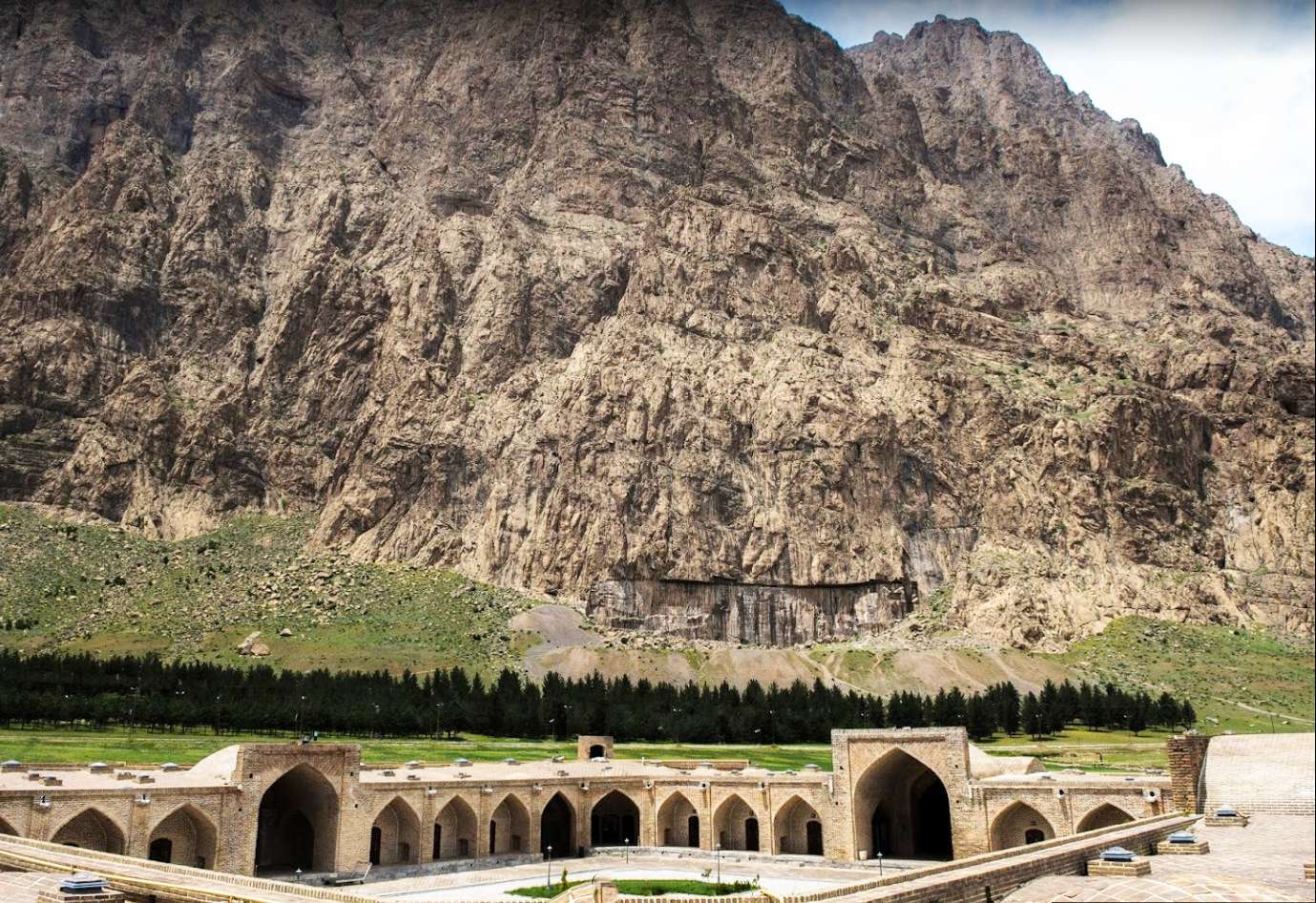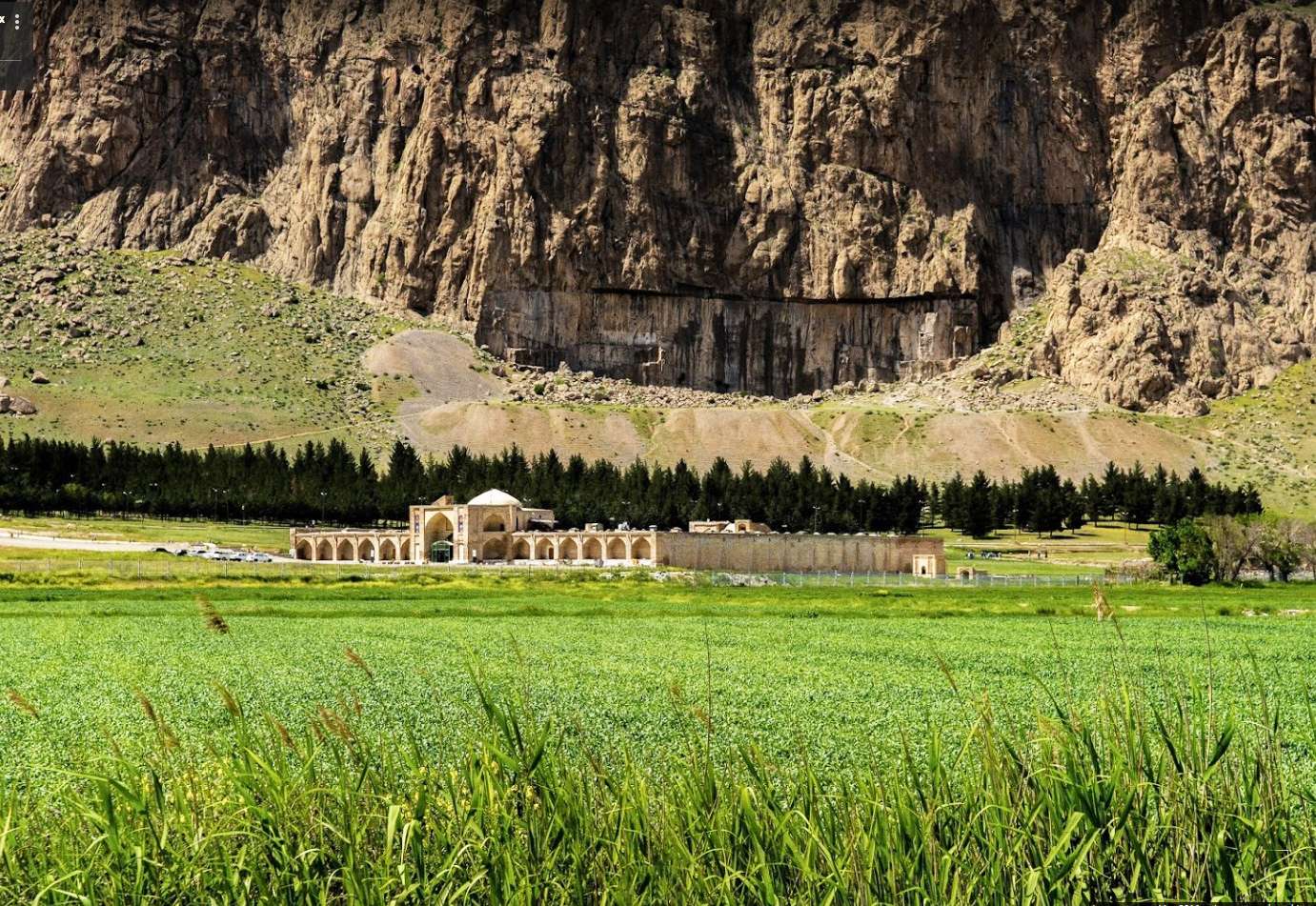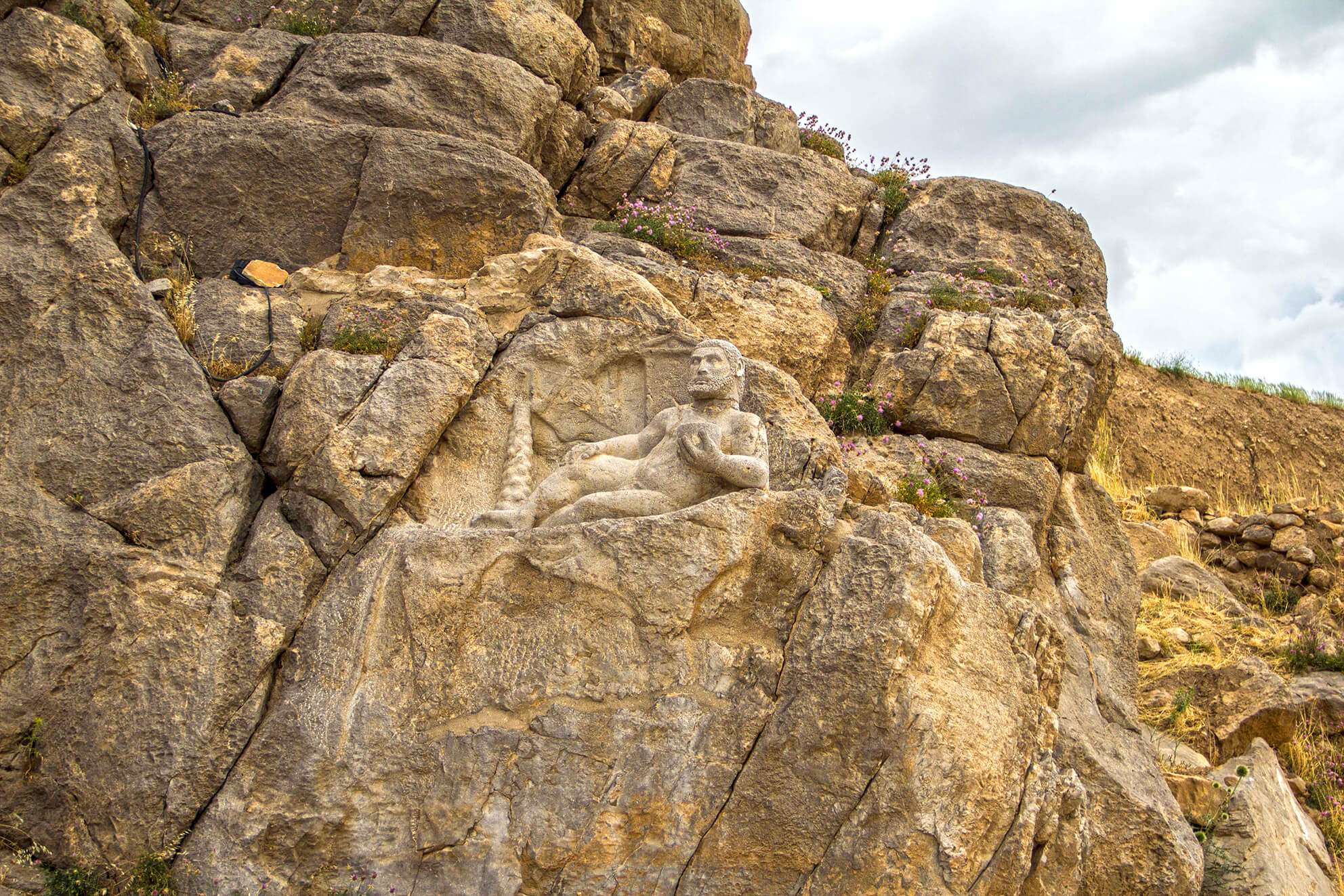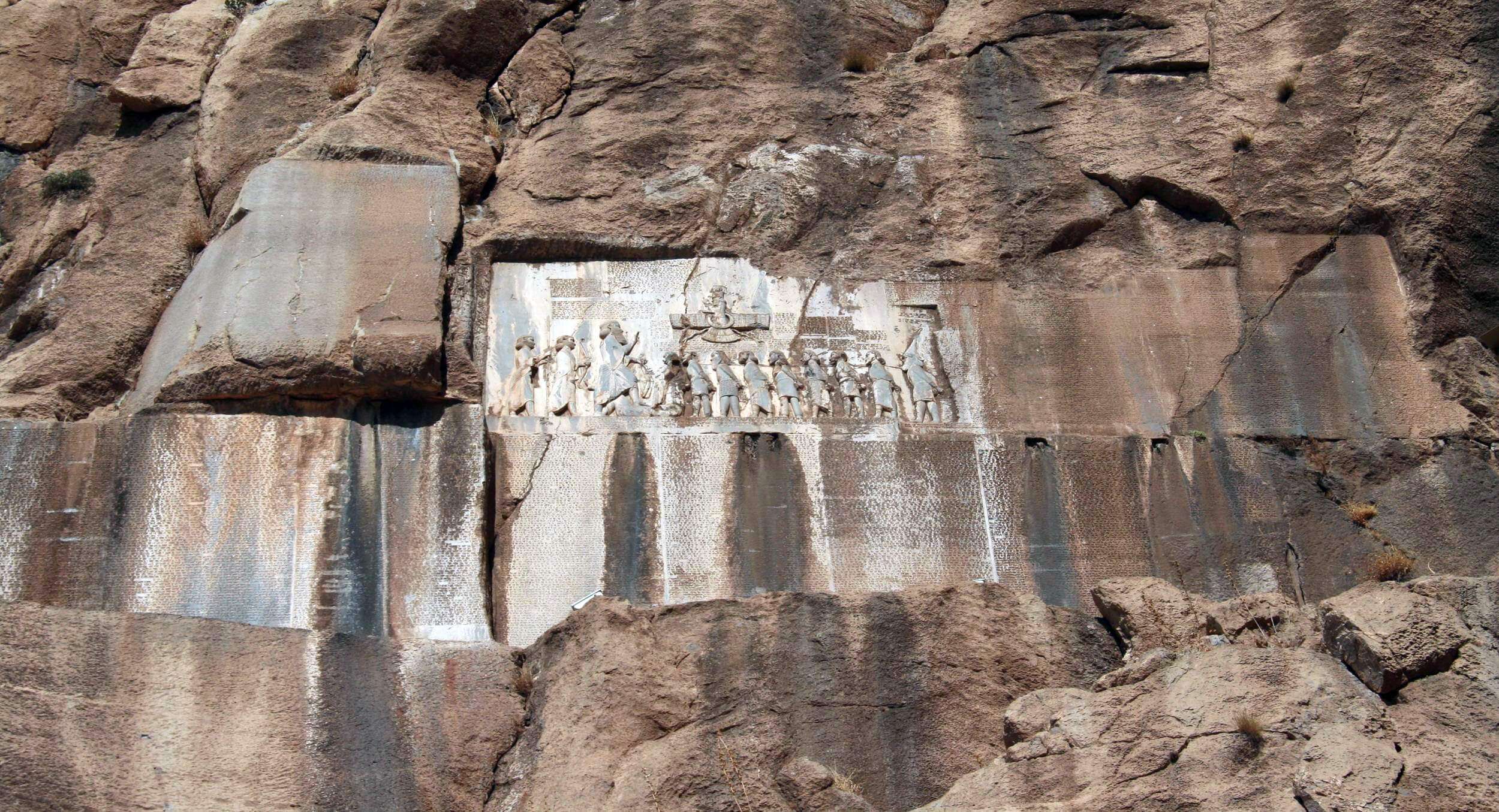Behistun Inscription (Bisotun)
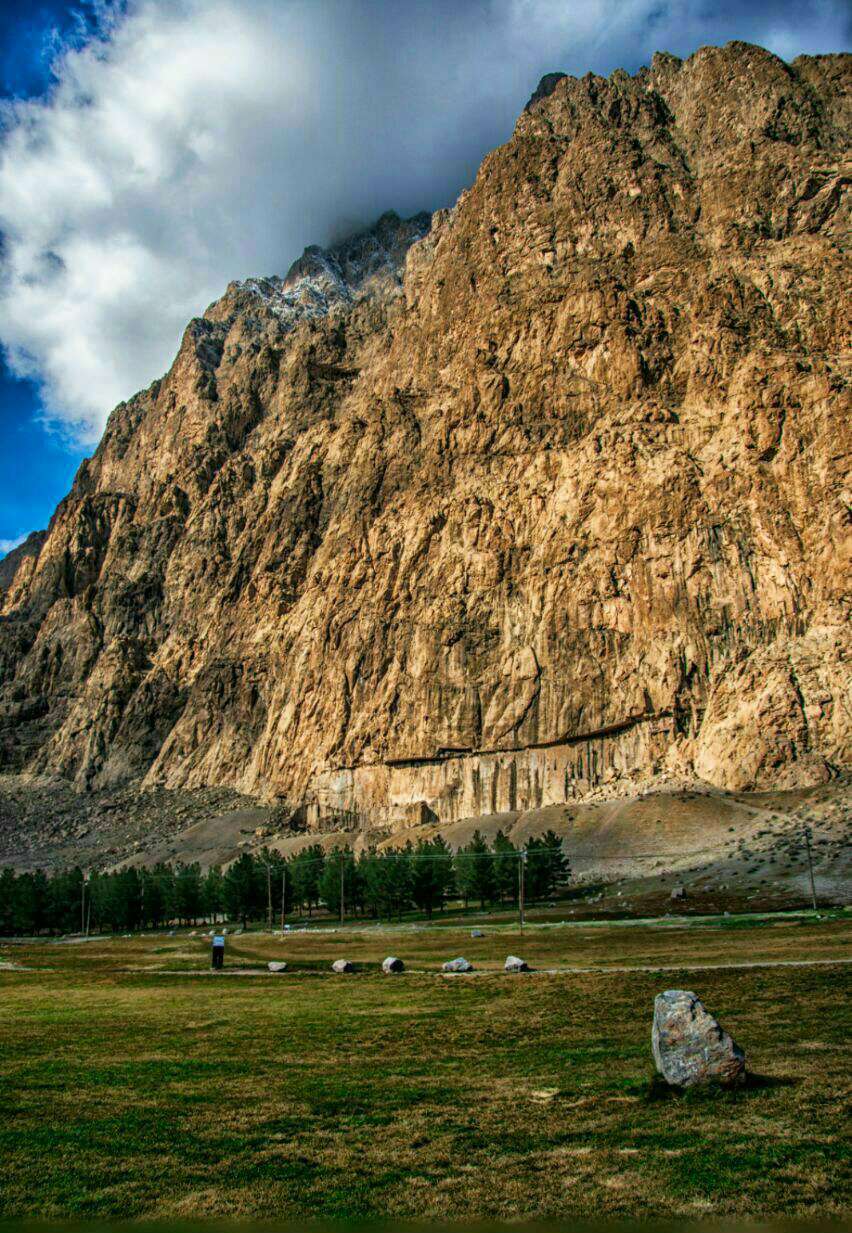
- Visiting
Behistun Inscription (Bisotun) in Harsin
- ThemeHistory and Culture
- CodeIRSG1622
- Duration3 hr(s)
- Websitebisotun.ichto.ir
Visiting the ancient bas reliefs and inscriptions on the wall mountain near Kermanshah
- Spring8:00 -20:00 *
- Summer8:00 -20:00
- Autumn8:00 -18:00
- Winter8:00 -18:00
* Best Time
Photos of the Behistun Inscription (Bisotun)
Explore the Behistun Inscription (Bisotun)
Behistun Inscription
The ancient site of Bisotun on the western edge of Iran, comprises a number of valuable relics from the Paleolithic era (2nd millennium) to the reign of the Safavid dynasty (about 500 years ago). The UNESCO recognized heritage of Bisotun, located along the road linking Medea (the current city of Hamedan) to Mesopotamia, is a spectacular mountainous site overlooking a vast plain on the northeast of Kermanshah.
Being the biggest rock wall in Iran, Bisotun Mountain is a part of the Zagros mountain chains. The name Bisotun originates from Bagastana, a Greek word meaning “Place of the god”. Many historical accounts recognize the Bisotun Mountain, as the temple for worshipping the ancient gods of Iran. It was located by the highway stretching from Raga (Rey) to Hegmataneh, and the Mesopotamia, which facilitated access to the west and east.
This is the only remaining inscription that gives accounts of the historical events of the time. Hence, Darius I, its creator, has been recognized as the earliest known historian of Persia and the relief is known as the earliest Iranian historical account. The elegance and splendor of the relief have been praised and admired by geographers, archeologists, and travelers. Ibn al-Faqih al-Hamedani, the 10th –century Iranian geographer has called it “one of the old ages’ wonders”, and Ernst Herzfeld, German archeologist has described it as “the gateway of Asia”.
Highlights
- Sarab-e Bisotun
- Paleolithic Caves
- Goudarz’s Bas-relief
- Balash Relief
- Figure of Hercules Relief
- Darius’ Inscriptions and Relief
- Farhad Tarash
- Remains of the Sassanid Palace and Il-Khanid Caravanserai
- Shah Abbasi Bridge
- Abbasi Caravanserai
Sarab-e Bisotun
The natural water spring of Sarab-e Bisotun on the foothill of the mountain is the first thing you may notice in this site. The spring dating back to the Paleolithic era flows into a small pond, contributing to the settlement of early humans in the area.
Paleolithic Caves
On the slopes of Bisotun Mountain, there are four caves from the middle Paleolithic era, called Mar-Tarik, Mar-Kher, Mar-Dodar and Shekarchian. Shekarchian, is the most accessible cave and one of the oldest spots in the site that boasts the evidence of the first human settlements. It is located just near the figure of Hercules, above the water spring of Sarab-e Bisotun, and used to be a shelter for early men while hunting. During archeological excavations in 1949, several pottery pieces, stone tools and animal and human bones, supposedly dating back to 40,000 - 70,000 years ago, were discovered. The potteries are among the first pottery works made in Persia.
Goudarz’s Bas-relief
On the body of the rocks, you can see a bas-relief dedicated to Gudarz II, one of the Parthian Kings. It depicts the figure of Gudarz on horseback while attacking the enemy with his spear. There is a carved motif above the relief, which is believed to be Nike, the goddess of Victory in Greek mythology. Gudarz’s bas-relief is flanked by another relief from the Parthian King, Mithridates II (ruled 121-91 B.C). During the Safavid period, Sheikh ‘Ali Khan, the tough ruler of Kermanshah, ordered an inscription to be carved on Gudarz’s bas-relief, for this reason the original reliefs were destroyed to some extent. Jackson, an American researcher who came to this site in 1904, called Sheikh Ali Khan’s action “destruction of artistic ancient relic”.
Balash Relief
Another Parthian relic on the slopes of Bisotun Mountain, is the Balash relief, 400 meters east of Goudarz relief. The relief is carved on an irregular square shaped 250-cm panel. In the middle of the panel, you can see the figure of a tall man (about 180 cm) with long hair, a thick beard and a handlebar mustache wearing a simple long cloth and harem pants. His belt has five rings with two beautiful ribbons hanging from the middle ring. He has a bowl on his left hand, and is sprinkling something on a firebox by his right hand. A Parthian language inscription is carved on the body of this 72-cm cylinder firebox. The text is not readable now due to erosion of the lime stone. In 1970, a German archaeologist managed to partly read the text. He believed that the text includes the introduction of Balash, the Parthian king, but as the last part of the text was eroded, he could not confirm which Balash is meant as there were five Parthian kings named Balash.
On the left and right sides of the Balash relief, there are two other reliefs. The one on the left side depicts the figure of a young man or a woman with a height of 159 cm, wearing the same clothes as the Balash and a necklace. He (or she) has his (or her) left hand on the belt and is wearing an armlet on his (or her) left arm. The figure has bent his (or her) right hand holding something like a Barsom or a bouquet. The relief on the right side displays a 164-cm figure of a man with a thick beard wearing a necklace, a belt, a long cloth and a pair of half boots. He has a ribbon fastened on his right thigh which is dancing in the wind.
Figure of Hercules Relief
The 1.47 meter rock carving on a 2.20 meter platform on the foot of Bisotun Mountain, is a relief displaying the figure of Hercules (the Greek mythological hero and god), in reclining position, with a bowl in his hand. On the background of this Seleucid period relief (about 150 B.C), you can see an old Greek inscription decorated with carved motifs like an olive tree. A con-shaped 73-cm mace is carved beside the inscription. It seems that the carved lion under Hercules’ figure was added to the relic in a different period. The figure was discovered during the construction of a road to Hamedan in 1958.
Darius’ Inscriptions and Relief
When Darius the Great overcame internal rebels in 522 B.C, he decided to inscribe and leave a lasting evidence of his victories. About 2 years later, Darius’ inscription was carved on the body of Bisotun Mountain, as the Bagastana was considered a sacred place, and above all, was located on the main road to Mesopotamia. The monumental bas-relief and inscription of Darius, are engraved on an area of 22*78 meters, on the body of the mountain. This magnificent relic from the glorious days of Achaemenes’ reign consists of a 5.5*3 meter bas-relief, depicting a scene of victory over Gaumata (the false king) and the other nine rebels, together with an inscription in three languages (Persian, Elamite and Babylonian). The relief shows the king wearing his royal robe and imperial crown, with his left foot on the chest of Gaumata. His bow carrier (Intaphrenes) and lance carrier (Gobryas) are standing behind him, as the conqueror king overlooks the enemies whose figures are visibly carved in a smaller size than that of Darius the Great (figure of Darius is 180 cm, while the rebels are 120 cm in size). Small-scale inscriptions reveal the identity of these false kings with tied hands. The scene is topped with a winged symbol of Ahura Mazda (the Zoroastrians God) offering the “ring of power” to Darius, which symbolically shows the investiture of Darius.
In 1963, the German archeologists, Heinz Luschey, Trumpelmann and Hinzen discovered that the ancient monument of Bisotun has been carved during five stages. In the first stage, the bas-relief of Darius (the King and his bow and lance carriers, and the eight rebels), together with a small Elamite inscription which introduces Darius and the identity of his depicted enemies were carved.
In the second stage, the king commissioned an Elamite inscription about his brave efforts to suppress the rebellions on the right side of the relief. The four-column inscription (total of 323 lines) starts with the lines: “I am Darius the great, King of kings, the king in Persia…”
The third stage of carving includes a single-column inscription on the left side of the relief, which is a 112-line text in Babylonian language, and eight short texts about Darius’s enemies in Elamite. The Babylonian text conveys the number of casualties and captives during the battle.
Obviously, it was the first time that Persian cuneiform is used to record the orders of an Achaemenid emperor. Before Darius the Great, the Achaemenes wrote their rock inscriptions in Elamite or Babylonian scripts. Darius ordered to a new script (the Persian cuneiform) to be created. In the fourth stage of carving the Bisotun monument, the Persian cuneiform script was used for the first time, as it is mentioned by Darius: “by the will of Ahura Mazda that is my script, which I made. Also, it was in Aryan, and it was placed on clay tablets……And it was inscribed and was read before me. After I sent this script everywhere into the lands. The people learned it”. The new inscriptions in cuneiform are engraved below the relief in four columns and 378 lines.
After Darius fought new rebels in 519 B.C (the Elamites under Atamiata), and in 518 B.C (the Scythians under Skunkha), he ordered the figure of Skunkha to be added to the right side of the relief at the end of the rebellions’ queue (he is wearing a pointed cap). The fifth stage of carving was completed by removing the Elamite text on the right. They had to copy the Elamite text on the left side of the Old Persian version. And finally six paragraphs which had described the battle of Darius with these rebellions were added in a separate column to the Old Persian text below the relief. Now you can see a total of five columns in Old Persian below the relief.
Remains of the Sassanid Palace and Il-Khanid Caravanserai
During the excavations in the area, between the foothills and Abbasi caravanserai, remains of two structures from two periods of history were recognized, a Sassanid palace and an Il-Khanid caravanserai. Commissioned by Oljayto, the 8th ruler of Il-Khanids (r. from 1303-1316), a new caravanserai was erected on top of the Sassanid palace by using Sassanid building materials. In 14th century during the Timurid period, the caravanserai was destroyed as a result of an earthquake. The caravanserai is mentioned in travelogues by French travelers Tavernier (visited Iran in 17th century) and Coste and Flandin (visited Iran in 19th century).
Shah Abbasi Bridge
The long mud-brick bridge on Dinvar-ab River on the northeast of Bisotun, is a still-functioning structure from Safavid period. Today known as the Nader-abad Bridge, it is 115 meters long and 7 meters wide. Some Sassanid stone blocks are used in the bridge.
Abbasi Caravanserai
Shah Abbas planned to build a caravanserai for the Iranian pilgrims travelling to Iraq to visit the shrine of Shiite’s Saints. Started with the order of Shah Abbas I (r. from 1588-1628), the caravanserai was completed during the reign of Shah Soleyman (1666-1694). It is a four-porch (four ayvan) building with four watch towers, one in every corner. The watch towers are 90 meters in length and 80 meters in width built by about 1500-year old stone blocks from the Sassanid era. The inscription on the southern wall of the building dating back to the Qajar period bears indications of a renovation during the reign of Naser al-Din Qajar (1848-1896).
